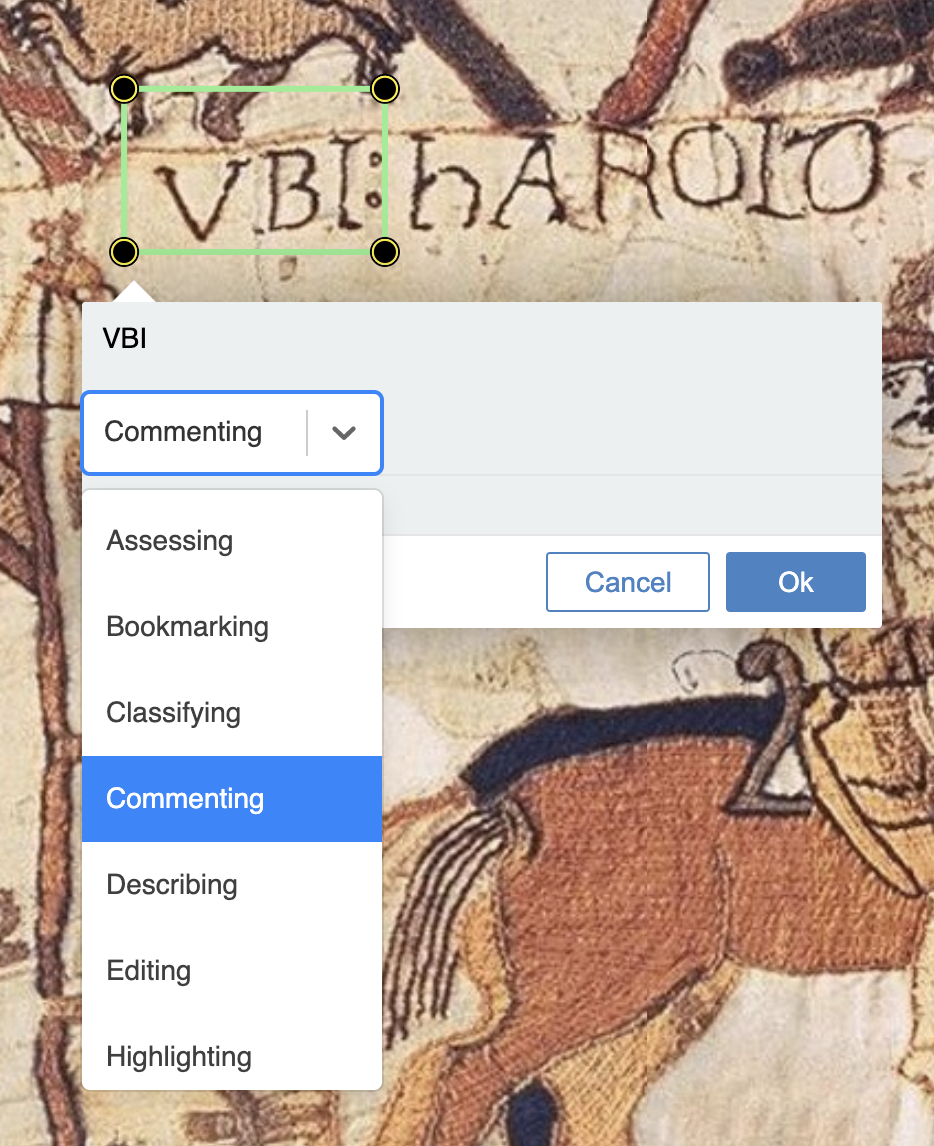

There is a dropdown of purposes. They don’t currenlty do much, but in the future they could be used to differentiate the view of the annotation. By default commenting is the choosen “purpose” and should cover most things. A list of each purpose from the dropdown is listed below with a corresponding description.
Definitions come from: https://www.w3.org/TR/annotation-model/#motivation-and-purpose.
- assessing: The motivation for when the user intends to assess the target resource in some way, rather than simply make a comment about it. For example to write a review or assessment of a book, assess the quality of a dataset, or provide an assessment of a student’s work.
- bookmarking: The motivation for when the user intends to create a bookmark to the Target or part thereof. For example an Annotation that bookmarks the point in a text where the reader finished reading.
- classifying: The motivation for when the user intends to classify the Target as something. For example to classify an image as a portrait.
- commenting: The motivation for when the user intends to comment about the Target. For example to provide a commentary about a particular PDF document.
- describing: The motivation for when the user intends to describe the Target, as opposed to (for example) a comment about it. For example describing the above PDF’s contents, rather than commenting on their accuracy.
- editing: The motivation for when the user intends to request a change or edit to the Target resource. For example an Annotation that requests a typo to be corrected.
- highlighting: The motivation for when the user intends to highlight the Target resource or segment of it. For example to draw attention to the selected text that the annotator disagrees with.
- identifying: The motivation for when the user intends to assign an identity to the Target. For example to associate the IRI that identifies a city with a mention of the city in a web page.
- linking: The motivation for when the user intends to link to a resource related to the Target.
- moderating: The motivation for when the user intends to assign some value or quality to the Target. For example annotating an Annotation to moderate it up in a trust network or threaded discussion.
- questioning: The motivation for when the user intends to ask a question about the Target. For example to ask for assistance with a particular section of text, or question its veracity.
- replying: The motivation for when the user intends to reply to a previous statement, either an Annotation or another resource. For example providing the assistance requested in the above.